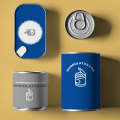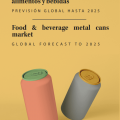Manufacturing Outlook 2021: food and beverage manufacturers cautiously optimistic
The U.S. news outlet for food and beverage manufacturers, Food Processing, conducted its customary annual survey of manufacturing issues in late 2020, looking at concerns about hiring and retention, food safety, capital spending and other variants.
2020 was different and, of course, all the results have been about the Coronavirus and its economic consequences.
Food and beverage manufacturers are not succumbing to the problems this pandemic has created. The survey, 2021 Manufacturing Outlook 2021, which sampled 158 respondents, indicates that at least 37% of respondents said they were “somewhat optimistic” about their future. 21% say they are “very optimistic”. This optimism is not only based on this margin measurement, but 41% of respondents have indicated that they will hire staff this 2021 while in terms of production, 41% indicated that they plan to increase production by adding production lines or plants.
Food safety, cost control, worker safety and changes as a result of COVID were some of the most important factors that manufacturers had to address with the highest priority, as stated in the survey. But, in relation to how it has affected them, 59% have indicated that they had to change production schedules to meet changes in demand. Some respondents did not refer to the response alternatives in the survey but included comments about the pandemic such as “We have to disinfect all areas every few hours”, “Delays in receiving supplies”, “Tremendous focus on educating workers on how to stay safe and healthy”, “Difficult to see suppliers”, “Morale dropped in workers”.
Food security has been their main problem, according to those interviewed. Given a variety of options, the “most overwhelmingly popular” response, according to Food Processing, was employee training with 71% of responses. Next in popularity were “more/better sanitary equipment” (42%); a HACCP plan (33%); and third-party certification (32%).
Automation is a relevant point in food manufacturing, but also a problem, mainly due to the difficulty of finding specialized technical personnel. This factor slows down this process. “I think one of the main reasons food and beverage has been slow to automate is that they have difficulty finding the technical workers needed to design, program and operate automation solutions,” says Tyler Noesser, CTO of Alliantgroup, a provider of specialized tax services.
Related to this, respondents were asked about 10 strategies for dealing with automation-related personnel issues. Their top three choices (with multiple responses allowed) were: Expand in-house technical training (42%); Hire maintenance technicians (33%); Add in-house engineering capabilities (31%).
In relation to how digital technology has impacted them, the responses were: Replacing paper records with electronic records (52%), Replacing analog devices with digital (38%), Moving from local servers to the cloud (35%), Providing more remote access to machine controls (35%).
Capital expenditure related to manufacturing was another issue. 32% said they did not know what their companies’ plans are for 2021. Of the remainder, 25% said they expected it to stay about the same, while 27% expected it to increase from 5% to more than 10%.
But when asked how they thought their companies would invest that expense, the answers were: process equipment, packaging equipment and plant/worker safety.
This optimism that we talked about at the beginning and that food and beverage manufacturers still harbour will increase as consumer confidence improves about a pandemic that will hopefully dissipate.
This is what the economic advisory service IBIS World calls the “business sentiment index”, defined as an indicator of “the overall health of the business environment”, and which could increase by 5.7% in 2021.
This 2021 Manufacturing Survey was conducted online in November 2020 and garnered 158 responses from food and beverage industry professionals.











